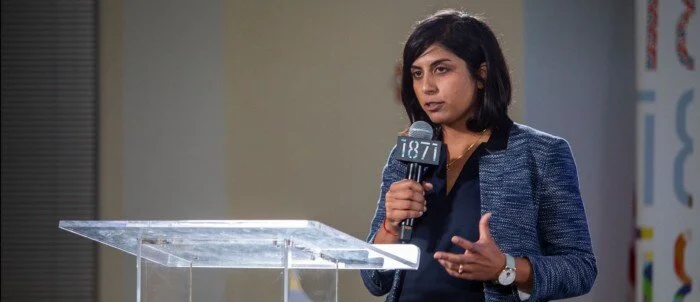By Chris Wu
The Role of Carbon Removal and Voluntary Carbon Markets
Carbon removal technologies are likely to play a crucial role in limiting warming to 1.5°C. In its April 2022 report on mitigating climate change, the Intergovernmental Panel on Climate Change (IPCC) highlighted the need to rapidly deploy carbon removal technologies to counterbalance hard-to-abate residual emissions and meet net-zero targets at a global scale. High-quality carbon credits are necessary in order to scale-up the deployment and operation of carbon removal technologies. Carbon credits enable businesses to make earlier and more ambitious climate commitments by allowing them to reduce their current emissions through offsets. Further, an active market for high-quality carbon credits is necessary in order to catalyze the flow of investments for deploying existing carbon removal technologies and developing new technologies. Voluntary carbon markets (VCMs) allow carbon emitters to offset their unavoidable emissions by purchasing carbon credits generated by projects targeted at removing or reducing greenhouse gasses (GHG) from the atmosphere. Each credit – which corresponds to one metric ton of reduced, avoided or removed CO2 or equivalent – can be used by a company or an individual to compensate for the emission of one ton of CO2 or equivalent gasses. A high-quality carbon credit represents real, quantifiable, additional, leakage-proof, and permanent GHG emission reductions or removals. VCMs represent an important mechanism to scale high-quality carbon credits from $2 billion in 2021 up to $40 billion by 2030.
Solution
Cloverly is an API-first marketplace for high-quality carbon credits, enabling businesses to meet their climate goals by offering seamless access to high-quality carbon removal credits from across the globe. While Cloverly is a marketplace for businesses of all sizes looking to offset their emissions voluntarily, it has seen strong traction in the enterprise segment, with customers across industries from logistics to financial services. Cloverly offers an API that matches any transaction with a carbon offset in real-time. Their API calculates the amount of carbon emissions generated by a particular activity and then purchases an offset instrument that pays for avoiding or sequestering the same amount of carbon elsewhere in the environment. Cloverly’s focus on project quality ensures that every carbon credit meets their criteria for additionality, permanence, leakage and other indicators. All projects listed on the marketplace undergo a rigorous quality evaluation process by climate science experts that look at 60+ quality indicators to pick the best projects in the voluntary carbon market. As a result, only 10% of carbon credits pass through their screening process and are deemed high-quality and eligible to be on their marketplace. Cloverly’s marketplace allows customers to buy both spot and forward credits in one click. That means they can purchase and build an inventory of credits that can be retired when needed to help them manage carbon credit price volatility.
Why We Invested
Our investment and impact thesis are premised on the catalytic role that VCMs are likely to play in the coming years. Active and efficient carbon markets will be necessary in order to create the right set of incentives for the deployment of projects offering high-quality carbon credits and the development of new carbon removal technologies. The rapid development and deployment of carbon removal technologies is imperative to the achievement of global climate goals, it’s estimated that 10 gigatons of CO2 will need to be removed from the atmosphere annually by 2050. As governments and corporations set ambitious climate targets that entail more than just reducing their emissions, the relevance of VCMs will increase. With the use of carbon capture technologies set to increase 13x, driven by the provisions of the IRA, VCM transaction volumes are likely to register exponential growth.
While today’s VCM is growing at a breakneck pace, it lacks some of the fundamental elements required to drive meaningful impact at scale. Cloverly has been addressing these problems surrounding access, ease, trust, and transparency since its inception as the first API in the world for carbon credits. On the demand-side, Cloverly’s approach is characterized by a focus on the enterprise segment, a recent change in strategy for which there is already clear evidence of success. Cloverly has seen strong growth in transaction volumes and customer acquisition, and has signed key partnerships with Visa, American Express, Redwood Logistics, Ecolytiq, and Salesforce. On the supply-side, what sets Cloverly apart is its ability to provide customers access to a vast and diverse, high-quality portfolio of both nature-based and technology-based carbon offset projects from across the globe. Its focus on high-quality offsets and sourcing and verification processes are key, and this was critical to us (and, we believe, to its customers), given the significant challenges associated with tracking and verifying project credentials and performance. Lastly, we believe the team, led by CEO Jason Rubottom, has a strong understanding of the problem and the market, as well as a clear and compelling vision for the company.
Impact
We believe that Cloverly’s marketplace enables both SMBs and large enterprises to effectively offset their emissions through the purchase of high-quality offsets. Purchasing high-quality carbon credits, in addition to eliminating avoidable emissions, plays a critical role in accelerating the transition to net-zero emissions. Making and achieving credible decarbonisation commitments is challenging for businesses, particularly in emissions-intensive sectors. Credits allow businesses to reduce their emissions now through offsets, while taking cost-effective action to reduce future emissions through asset turnover and evolution of their business models. In the longer term, credits have an essential role in offsetting hard-to-abate emissions from products which lack low or zero emissions options. At scale, the carbon removal purchases that transact on Cloverly’s platform can improve the economic viability of emerging carbon capture technologies, thereby catalyzing the flow of capital to that sector. In the case of high quality nature-based offsets, which promote the preservation of natural ecosystems, they direct private financing to climate-action projects that would not otherwise get off the ground. These projects may also offer additional co-benefits in terms of biodiversity protection, pollution prevention, public-health improvements, and local job creation.













